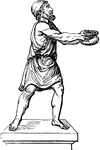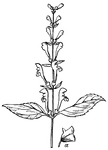Clipart tagged: ‘Skullcap’

Iron Skullcaps from the 16th Century
Two skullcaps used for defense of the head in the 16th century. The caps fit closely to the head. The…

Petasus
"The Petasus differed from the pileus or simple skull-cap in having a wide brim: the etymology of the…

Pileus
"Any piece of felt; more especially, a skull-cap of felt, a hat. These seems no reason to doubt that…

Skullcap - Upper Part of the Flowering Stem
"A plant of the genus Scutellaria: so called from the helmet-like appendage to the upper lip of the…